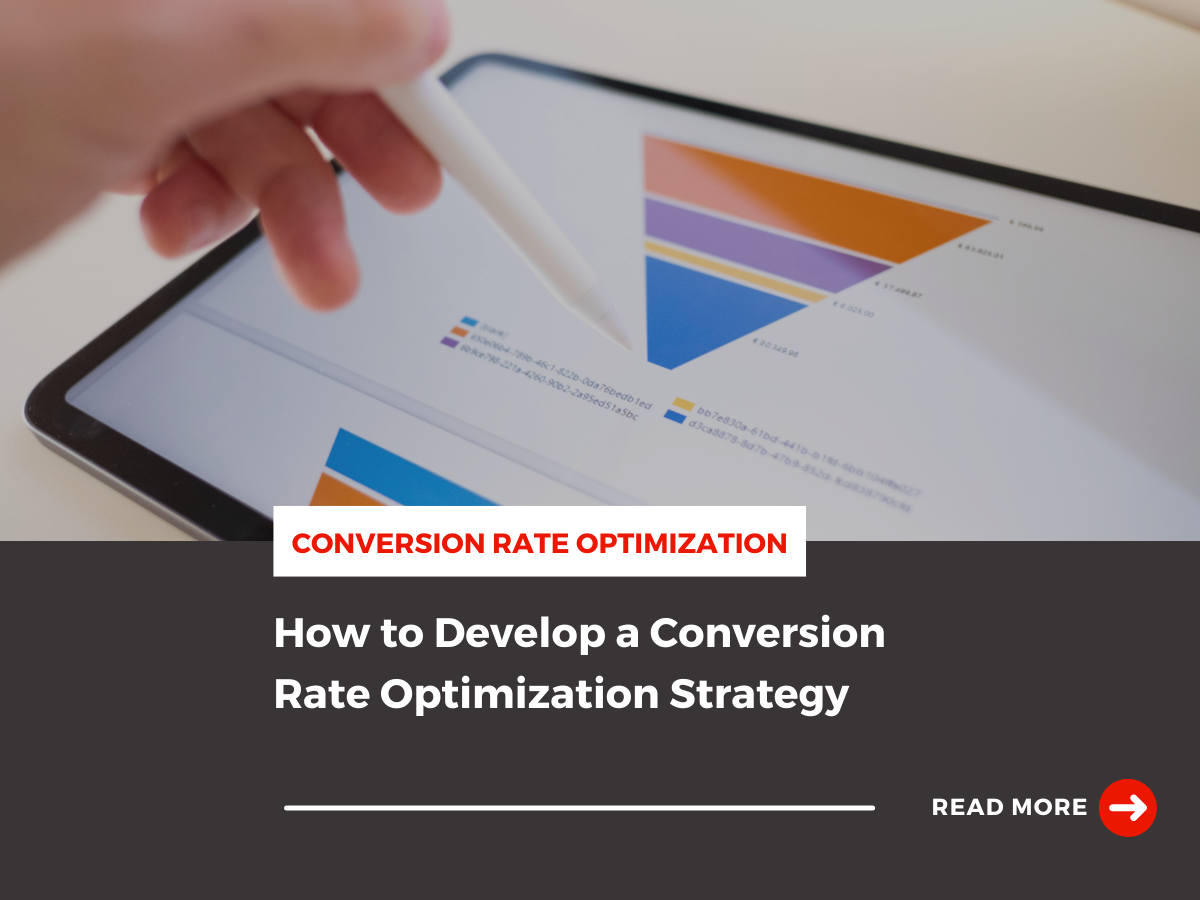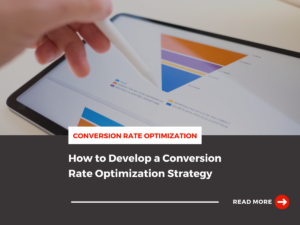What do a purchase, an event registration, and new newsletter signup all have in common? They’re all actions derived from conversions.
The driving force of your conversion rate is the consumer. Every step the individual takes in the purchasing journey and every CTA button they click pulls you closer to your goals and provides insight into your overall conversion rate.
However, if you’re seeing a steady flow of traffic back to your site but not enough conversions: It may be a sign you need to start prioritizing conversion rate optimization strategies and start thinking about your conversion marketing tactics.
Here’s everything you need to know:
What is Conversion Rate Optimization?
Conversion rate optimization (CRO) focuses on increasing your conversion rate for a specific action. Whether it’s to download a report, purchase a product or simply fill out a form: CRO is all about brainstorming new and innovative ideas for increasing the number of visitors that take this specific action.
With CRO and conversion marketing, marketers have an opportunity to make small changes that lead to a big impact. Every improvement and change is designed to increase your conversion rate over time and help you see results.
With conversion rate optimization strategies, you can:
- Increase web traffic and attract new customers
- Build a better relationship with your prospects
- Improve the user experience
- Make substantial changes with your customers in mind
- Increase the number of actual buyers
Focusing on making small changes rather than big ones may not feel as vital to the big picture. However, if you’re able to increase your conversion by 1% or 2%: You’d see a substantial boost in revenue.
How to Calculate Conversion Rate
Before you can jump into website conversion optimization, you’ll need to calculate your CRO. Here’s the formula:
Conversion rate = number of conversions / # of visitors x 100
So, if you look at your results for a single month and notice you had 500 sales and 1,000 web visitors. Your conversion rate would be 5%. Keep in mind: that 5% is a pretty high conversion rate. Most eCommerce sites sit somewhere between 1% to 3%.
Once you know your current CRO, you’ll use it as a baseline and then reference it as you continue to optimize and make changes to your site.
How to Build an Effective CRO Strategy
1. Conduct a Thorough Analysis
To get started: you’ll need to gather data and conduct a thorough analysis. Take some time to identify what conversions you want to put your focus on. We recommend starting with your site’s analytic data in Google Analytics.
Google Analytics will provide insights into your audience’s behavior and demographics. You’ll see what landing page they start the customer journey at, how much time they spend on each page, where they come from, and what pages are causing them to leave your site.
With this information on hand, you can then take a look at your on-site analysis. During this phase, you’ll want to ensure every component on your site is purposeful and intuitive by conducting a UX experience analysis. Ensure that the web design and CTAs aren’t causing friction and are benefiting your overall goals. This analysis will also help you take a closer look at your customer journey and how effective it is.
The data you gather in the initial phases will be a baseline for the rest of your conversion marketing moving forward. If you can’t find everything you’re looking for, consider going directly to your source with a survey during this initial phase. Gathering user insights from your target audience is a great way to understand the experience and their challenges with your site on a deeper level.
2. Dive into Competitor Research
Your competitor’s websites can help you improve the user experience on your site. It will help you identify the strengths and weaknesses of your customer journey.
Ask yourself:
- What do you like that they do?
- What can they do differently?
- Is there particular content on their website that you can mimic for your own?
- What do their CTAs look?
- Are there any inviting design components?
If you’re sending out a survey, you may also decide to add in a few survey questions regarding your competitors to see what insights your consumer provides.
3. Implement Your CRO Strategies
After you’ve gone through the data and identified new opportunities, it’s time to use your findings to build an effective conversion rate optimization strategy.
Certain pages on your website will benefit the most. These include:
- Homepage: Your homepage is the first impression. It should be clear, concise, and intentional. Consider adding chatbots, revamping CTAs, and adding signup buttons.
- Landing pages: These pages are created for action. Every creative component should be intentional and lead your website visitors to convert.
- Blog content: Blogs provide more value to your website and help establish you as an industry leader. Depending on your goal, optimizing your CTAs or setting up lead capture forms can help increase your conversions.
- Product pages: Your product pages can make or break a conversion. If a consumer feels like they need to search for answers, they may feel inclined to shop somewhere else.
4. Never Stop Brainstorming
As you scour the internet for conversion rate optimization tips, remember there is no one size fits all way of doing things. Every website, industry, and business and customer experience is different.
Always keep an open mind, look for new opportunities, and constantly brainstorm ways to optimize your user experience to increase your conversion rate.
If you need some inspiration, you can start by:
- Setting up a/b testing: This marketing method allows you to test half of your audience to determine the most effective approach you should take for content, email marketing, and more.
- Turning on conversion tracking: Setting up conversion tracking in GoogleAds can help automate your data and show you real-time insights into your customer interactions.
- Sending out surveys: User insights can help you make invaluable changes to your user experience and help you meet the needs of your target audience.
- Being a customer on your own site: Shop your website the same way you’d shop at your favorite eCommerce store. Go through the entire customer experience for yourself, and look for areas of improvement and new opportunities.
- Try out pop-ups: Adding a creative pop-up with a powerful CTA can significantly impact your conversions in a positive way. Just make sure you focus on personalization and follow compliant formats when your implementing pop-ups on your site.
5. Adjust, Revise, Evaluate
With conversion rate optimization, your work doesn’t stop after implementing a few changes. There will always be new challenges to overcome and more opportunities to improve the user experience. Data will provide new insights, and A/B testing will give you a fresh perspective on your content.
The consumer’s behavior is constantly changing, so you’ll need to stay ahead of the curve and always be open to making changes that positively impact your bottom line. Once you implement new changes to your website or marketing initiatives make sure you track your progress month over month and quarter over quarter.
Take the baseline conversion rate you found at the beginning and see if it’s changed. Based on your results, you can decide what your next steps will be for revising and evaluating your conversion rate optimization strategies.
Focus on CRO with Kanbar Digital Today
No matter the goal, you always want your website visitors to click that CTA button. Whether you want individuals to sign up for a free webinar or want them to make a purchase: Every good marketing strategy needs to follow conversion rate optimization best practices to grow. If you feel like you’ve run every experiment and analysis you can think of, we’re here to help. The team at Kanbar Digital can help you slowly increase your conversion rate and build effective strategies that complement your bottom line.




